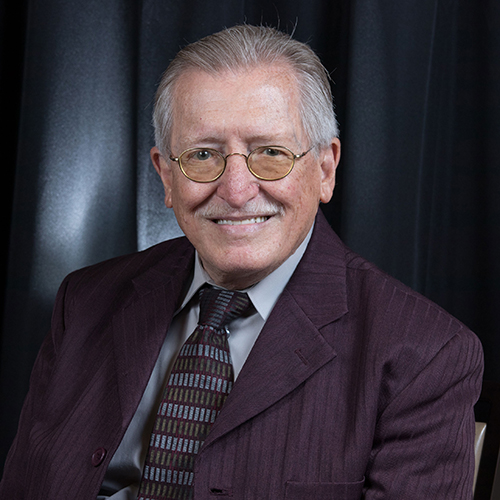The Glory of God in the Church in the Wilderness
By Bishop E. Roger Ammons, Communication Minister
“Husbands, love your wives, even as Christ also loved the church, and gave himself for it; That he might sanctify and cleanse it with the washing of water by the word, That he might present it to himself a glorious church, not having spot, or wrinkle, or any such thing; but that it should be holy and without blemish” (Eph. 5:25-27).
These verses tell us about the past, present, and future of The Church of God. In the past, Christ loved the Church and gave Himself for it, in the present, He is sanctifying and cleansing it, and in the future, He will present it to Himself a glorious Church.
In the title of this sermon, “The Glorious Church of God,” the word “glorious” actually has preeminence over the word “church.” The word glorious means “full of glory.” The glory of the Church is Christ Himself. The Church of God will come “unto a perfect man, unto the measure of the stature of the fulness of Christ” (Eph. 4:13).
The glory of God as it relates to the Church is a manifestation of His presence in His dwelling place. The word “glory” refers to the splendor and awesomeness of God’s nature, person, and being which makes Him worthy of all honor and glory. The Church, as a corporate body and as individual members, glorifies Him by reflecting the light of His glory in holiness, service, truth, love, etc., and by worshiping Him in offerings of honor and praise.
The “past glory” of the Church can be seen in the Old Testament as types, shadows, and prophecies of God’s glory that would inhabit God’s Church in the ages to come. The martyr Stephen, in his final message, preached that Moses “was in the church in the wilderness with the angel which spake to him in the mount Sina” (Acts 7:38) and how the Israelites “had the tabernacle of witness in the wilderness” (v. 44) for forty years. Later, David desired to build a temple for God (v. 46), but it was built, instead, by his son, Solomon (v. 47). Stephen continued to declare to the Jews that “the most High dwelleth not in temples made with hands” (v. 48) and that their fathers had slain the prophets “which shewed before of the coming of the Just One; of whom ye have been now the betrayers and murderers” (v. 52). They stoned Stephen to death. “But he…looked up stedfastly into heaven, and saw the glory of God, and Jesus standing on the right hand of God” (v. 55). In Stephen’s message, there are references to the past, present, and future glory of The Church of God.
One of the visible manifestations of the glory of the Lord in the Old Testament was a “cloud.” When the children of Israel departed from Egypt, “the LORD went before them by day in a pillar of a cloud, to lead them the way…” (Ex. 13:21). The white oval on our Church flag reminds me of that cloud and of God’s glory in His Church. A little over a month later, the children of Israel murmured because they were hungry. “And it came to pass, as Aaron spake unto the whole congregation of the children of Israel, that they looked toward the wilderness, and, behold, the glory of the LORD appeared in the cloud” (Ex. 16:10).
When they came to Mount Sinai, God told Moses to tell the people that if they would obey Him and keep His covenant, they would be His “peculiar treasure,” His “kingdom of priests, and a holy nation” (see Ex. 19:5, 6). The people answered, “…All that the LORD hath spoken we will do…” (v. 8). At that moment, they became the Church in the wilderness. Even as the Passover was a type and shadow of the blood covenant and the Lamb of God which would take away the sins of the world, this word covenant at Mount Sinai foreshadowed the Church that Peter later described as “a chosen generation, a royal priesthood, an holy nation, a peculiar people… Which in time past were not a people, but are now the people of God…” (1 Peter 2:9, 10). One enters the kingdom of God by the new birth, but one enters The Church of God by covenant. “And the LORD said unto Moses, Lo, I come unto thee in a thick cloud, that the people may hear when I speak with thee, and believe thee for ever. And Moses told the words of the people unto the LORD” (Ex. 19:9). “And the LORD came down upon mount Sinai… and the LORD called Moses up to the top of the mount…” (v. 20). There God gave him the Ten Commandments and various judgments. When Moses read these words to the people (Ex. 24:3), they renewed their covenant.
“Then went up Moses, and Aaron, Nadab, and Abihu, and seventy of the elders of Israel: And they saw the God of Israel… in his clearness” (Ex. 24:9, 10). The Hebrew word for clearness is translated as “glory” in Psalm 89:44. They saw a manifestation of the glory of God. In Psalm 89, we also find these words: “…I have made a covenant with my chosen… Blessed is the people that know the joyful sound: they shall walk, O LORD, in the light of thy countenance… For thou art the glory of their strength…” (vv. 3, 15, 17). God’s chosen covenant people have no glory of their own, they rather absorb and reflect the Lord’s glory. God gave Moses detailed instructions for the construction of a tabernacle in which He would dwell. He was to make the Ark of the Covenant (about the size of a modern day cedar chest) which was to be placed in the Tabernacle (Ex. 25:10). A mercy seat was to be placed on top of the Ark with a cherubim on each end. The two cherubims were to face each other, looking down at the Mercy Seat (vv. 17-21). The Lord told Moses that He would meet and commune with him between the two cherubims (Ex. 25:22). “And the LORD said unto Moses, Speak unto Aaron thy brother, that he come not at all times into the holy place within the vail before the mercy seat, which is upon the ark; that he die not: for I will appear in the cloud upon the mercy seat” (Lev. 16:2). The Psalmist David wrote, “…The LORD of hosts, he is the King of glory” (Psa. 24:10) and, “The LORD reigneth… he sitteth between the cherubims…” (Psa. 99:1) The Psalmist Asaph wrote, “…thou that dwellest between the cherubims, shine forth” (Psa. 80:1). Samuel also wrote that God dwelt between the cherubims (2 Sam. 6:2).
The Lord said to Moses, “And there I will meet with the children of Israel, and the tabernacle shall be sanctified by my glory… And I will dwell among the children of Israel, and will be their God” (Ex. 29:43, 45). The Tabernacle was the place where He had chosen to dwell, the place where He would manifest His glory, and the place where He would be the Supreme Ruler. Thus, the Church in the wilderness had a theocratic form of government in which the glory of the Lord was made manifest.
When God commanded Moses to leave Mount Sinai and go towards the promised land, Moses replied, “…If thy presence go not with me, carry us not up hence… shew me thy glory” (Ex. 33:15, 18). The Lord then said, “…I will make all my goodness pass before thee… and will be gracious to whom I will be gracious, and will shew mercy…” (v. 19). From this we learn that the glory of the Lord is a manifestation of His presence, goodness, grace, and mercy.
At Mount Sinai, the Lord had given explicit details about His covenant, the priesthood, the construction, and service of the Tabernacle, etc. “…So Moses finished the work. Then a cloud covered the tent of the congregation, and the glory of the LORD filled the tabernacle. And Moses was not able to enter into the tent of the congregation, because the cloud abode thereon, and the glory of the LORD filled the tabernacle. And when the cloud was taken up from over the tabernacle, the children of Israel went onward in all their journeys” (Ex. 40:33-36).


